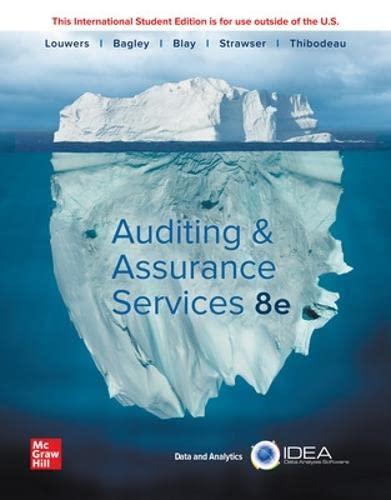x fe 13 A Chapter 5: Applying Excel Data Unit sales Selling price per unit Variable expenses per unit Fixed expenses 20,000 units $60 per unit $45 per unit $270,000 Enter a formula into each of the cells marked with a ? below Review Problem: CVP Relationships 2 Compute the CM ratio and variable expense ratio 3 Selling price per unit 4 Variable expenses per unit S Contribution margin per unit ? per unit ? per unit ? per unit 6 7 CM ratio 8 Variable expense ratio 20 Compute the break-even 21 Break-even in unit sales 22 Break-even in dollar sales 23 24 Compute the margin of safety 25 Margin of safety in dollars 26 Margin of safety percentage ? units 27 28 Compute the degree of operating leverage 29 Sales 30 Variable expenses 31 Contribution margin 32 Fixed expenses 33 Net operating income ? 34 35 Degree of operating leverage 36 37 38 6E 40 Required information The Chapter 5 Form worksheet is to be used to create your own worksheet version of the Review Problem example in the text. Download the Applying Excel form and enter formulas in all cells that contain question marks For example, in cell B13 enter the formula B5". After entering formulas in all of the cells that contained question marks, verify that the dollar amounts match the example in the text. Check your worksheet by changing the fixed expenses to $270,000. If your worksheet is operating properly, the degree of operating leverage should be 10. If you do not get this answer, find the errors in your worksheet and correct them. Save your completed Applying Excel form to your computer and then upload it here by clicking "Browse." Next, click "Save." You will use this worksheet to answer the questions in Part 2. ework Saved 2. Change all of the numbers in the data area of your worksheet so that it looks like this: A B Chapter 5: Applying Excel 2 3 Data Unit sales 80,000 units Selling price per unit Variable expenses per unit Fixed expenses $ 50 per unit 6 30 per unit $ 7 800,000 If your formulas are correct, you should get the correct answers to the following questions. (a) What is the break-even in dollar sales? Break-even in dollar sales (b) What is the margin of safety percentage? Margin of safety percentage % (c) What is the degree of operating leverage? (Round your answer to 2 decimal places.) Degree of operating leverage 3. Using the degree of operating leverage and without changing anything in your worksheet, calculate the percentage change in net operating income if unit sales increase by 20 %. Percentage increase in net operating income % Required information 4. Confirm your calculations in Requirement 3 above by increasing the unit sales in your worksheet by 20 % so that the Data area looks lke this: A C Chapter 5: Applying Excel 2 3 Data Unit sales 96,000 units 4 Selling price per unit Variable expenses per unit Fixed expenses 5 50 per unit 6 30 per unit 7 $ 800,000 (a) What is net operating income? (Negative amount should be indicated by a minus sign.) Net operating income (loss) (b) By what percentage did the net operating income increase? 2 Percentage increase in net operating income % 5. Thad Morgan, a motorcycle enthusiast, has been exploring the possibility of relaunching the Western Hombre brand of cycle that was popular in the 1930s. The retro-look cycle would be sold for $15,000 and at that price, Thad estimates 200 units would be sold each year. The variable cost to produce and sell the cycles would be $10,500 per unit. The annual fixed cost would be $675,000. nces a. What is the break-even in unit sales? Break-even in unit sales b. What is the margin of safety in dollars? Margin of safety in dollars c. What is the degree of operating leverage? (Round your answer to 2 decimal places.) Degree of operating leverage Thad is worried about the selling price. Rumors are circulating that other retro brands of cycles may be revived. If so, the selling price for the Western Hombre would have to be reduced to $12,800 to compete effectively. In that event, Thad would also reduce fixed expenses to $540,000 by reducing advertising expenses, but he still hopes to sell 200 units per year d. What would the net operating income be in this situation? (Negative amount should be indicated by a minus sign.) Net operating income (loss)













